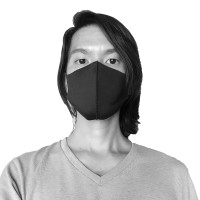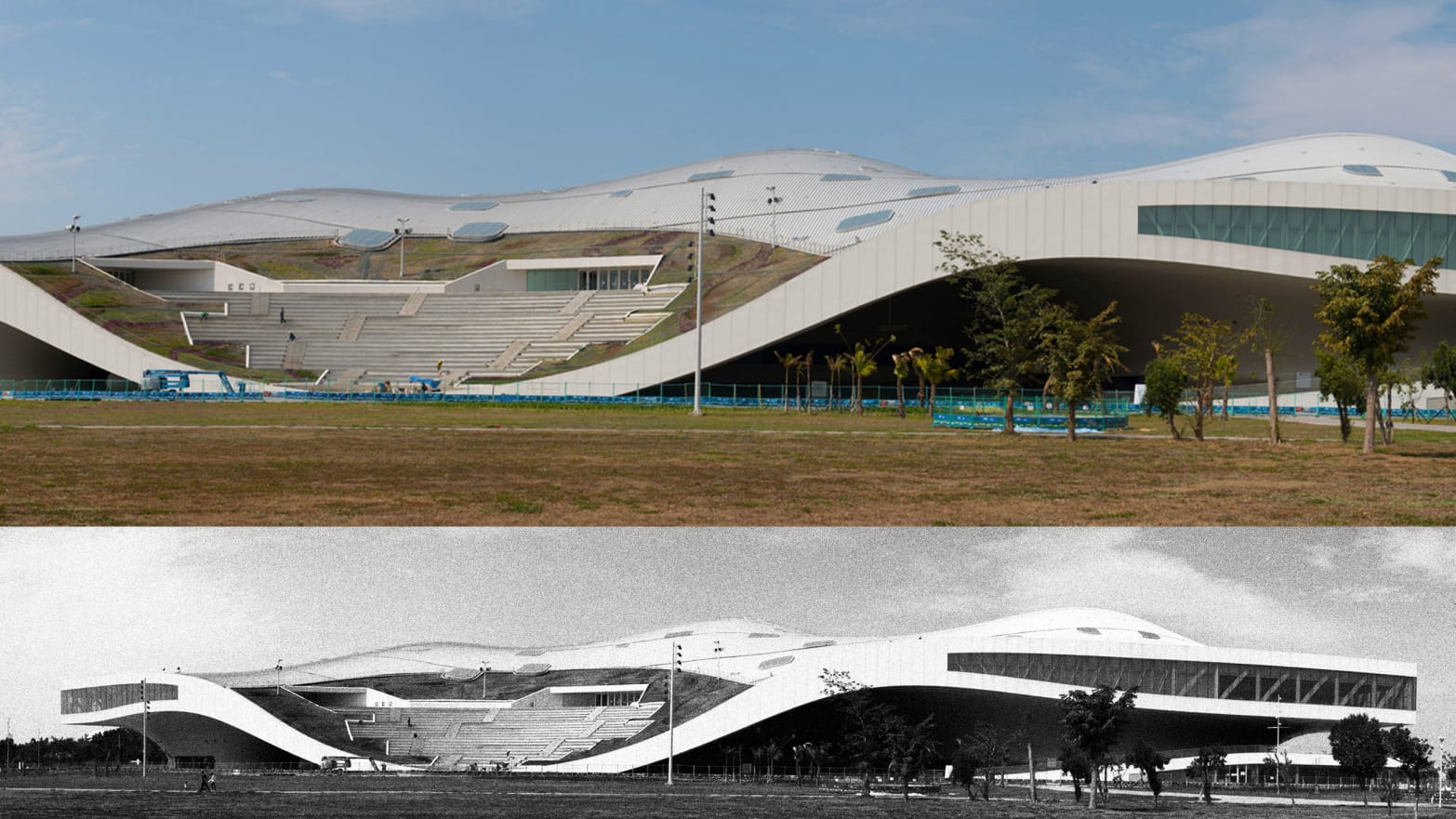KAOHSIUNG—In the past decade and a half, southwestern Taiwan has transformed significantly. Home to clusters of large factories and one of the busiest ports in Asia, the region’s largest city of Kaohsiung was once derided as a “cultural desert” fit only for Taiwan’s blue-collar workers. But cultural investment that began in the early 2000s has been gradually reshaping Kaohsiung’s identity, and the recent opening of a major performing arts facility reveals the city’s—and Taiwan’s—efforts to establish itself as something more than a flashpoint for geopolitical frictions.
The National Kaohsiung Centre for the Arts, also called Weiwuying, opened on Oct. 13. The structure occupies a footprint of 35 acres in a park that it shares a name with. It took seven years and NT$10.75 billion ($348 million) to build, and is the largest cultural investment in Taiwan in a generation. Weiwuying’s sweeping roof is, according to Dutch architect Francine Houben, inspired by the natural structure of banyan trees, which surround the site. In all, the roof covers a concert hall, a playhouse, and a recital hall, with an outdoor theater buttressing one side.
Weiwuying is more than a cultural gem or design achievement in a location once defined by heavy industry and vernacular architecture. It is also a political win for Taiwan’s pan-Green Coalition, which consists of Taiwanese president Tsai Ing-wen’s Democratic Progressive Party (DPP), as the initial plan for building the facility was put forward by the first DPP president, Chen Shui-bian, who has roots in the region. More importantly, and with lasting impact, it is a change in direction for Kaohsiung’s character: During the Japanese occupation of Taiwan, which lasted from the end of the 19th century until the end of World War II, railways were constructed to traverse the island so that food and other goods could be moved to Kaohsiung and shipped back to Japan. The Japanese Empire’s troops were barracked in Weiwuying Park, and the Kuomintang—then the Republic of China’s ruling party—converted the site for its own military after the Japanese retreat. Because of these transfers of power, there are deep associations between Kaohsiung and Taiwan’s martial history.
Demilitarization took place in Kaohsiung in the 1980s and ’90s. Even though the barracks no longer exist, the militaristic name of Weiwuying—literally, “the camp of might”—stuck. This is common across the city, and to some extent the rest of Taiwan, as colonial imprints are embedded in the islands’ social and cultural fabric. For instance, the waterfront area Hongmaogang in Kaohsiung is named after the red-haired Dutch colonists who set up a temporary camp while organizing their exodus from Formosa.
Building a cultural center over what was once a military installation has visceral implications for the people of Kaohsiung. During the opening ceremony, Taiwanese president Tsai Ing-wen spoke of how the completion of Weiwuying marks the transformation of a city that has for over a century embodied strong military connotations. Weiwuying takes into account that history in its construction—its exterior is welded steel painted white, with many panels made by the shipbuilders of Kaohsiung, who for years have been key players in sustaining Taiwan’s shipping industry.
Weiwuying has been an object of fascination for Kaohsiung’s citizens as it slowly materialized over the past few years. Many of the city’s residents have never heard classical music played live by an orchestra in a concert hall. The facility’s pipe organ, which is the largest in Asia, is a particular attraction: tickets for the first organ recital at Weiwuying sold out rapidly. The facility and its programs of classical and contemporary performances, along with other cultural initiatives—including the Pier-2 Art Center, which is a series of old harborfront warehouses (once used by the Japanese Empire) converted into exhibition and retail spaces, and a new concert arena that is still under construction—are breathing new life into southern Taiwan. For artists and performers who are planning tours in East Asia to showcase their work, a stop in Kaohsiung may now be a worthwhile option.
Looking ahead, the administrators of Weiwuying plan to host a queer festival at the center, though details have not been hashed out yet. This along with the strong possibility of recognizing same-sex marriage in Taiwan form a strong contrast with attitudes across the Strait: Earlier this year, security guards at an arts district in Beijing attacked and knocked down two Chinese women who were attending a gathering for the LGBTQ community, apparently triggered by the rainbow badges that the women were wearing. Later in the summer, fans of British pop star Dua Lipa were dragged out of her concert in Shanghai when they waved the rainbow flag.
Weiwuying warrants a visit by those who are interested in the cultural developments in East Asia. Other major cultural projects are being realized nearby as well. Just an hour’s flight away, Hong Kong’s heritage site Tai Kwun is a revamped prison and police station with a multi-level art exhibition space. In the same city, across the harbor, the M+ mega museum aims to be East Asia’s counterpart to London’s Tate Modern and New York’s MoMA when it opens in 2020.
For a region that so often is defined as a location embroiled in conflicts of sovereignty and self-governance, projects such as Weiwuying show us a different side of Chinese culture, and how Taiwan is using art to assert its position on the global stage, even as it loses diplomatic allies.

